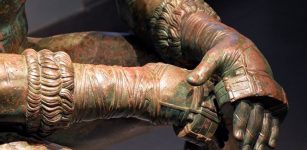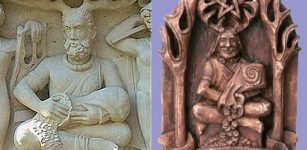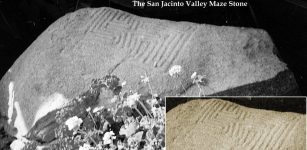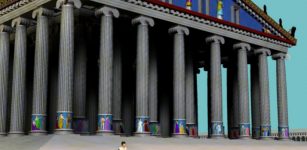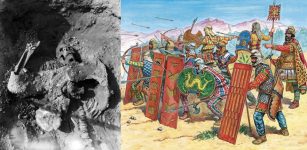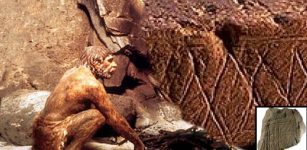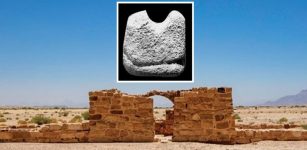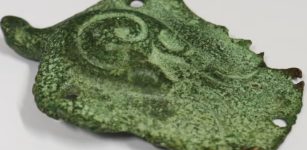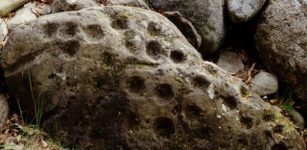2,500-Year-Old Mummy Workshop Discovered At Saqqara Necropolis, South Of Cairo, Egypt
AncientPages.com - A mummy workshop that dates back more than 2500 years and the 30-meter-deep shaft, a host of burial chambers with several mummies, sarcophagi and wooden coffins, have been discovered at Saqqara necropolis south of Cairo, Egypt.
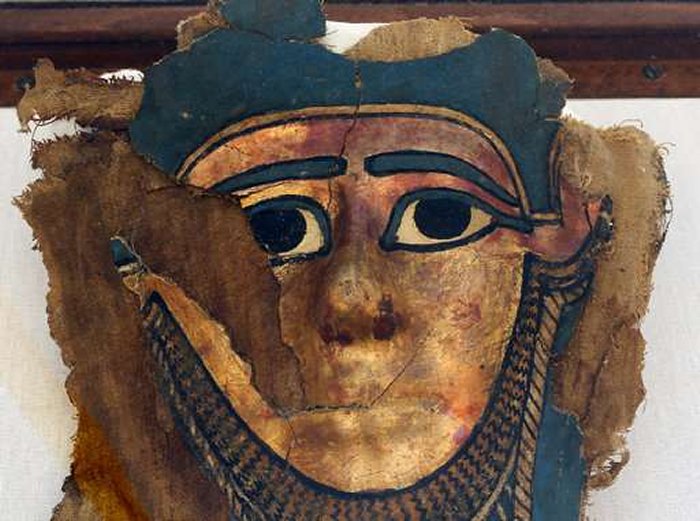
A recently discovered gilded mummy mask is displayed after it was found in a disturbed context of the hall way of a burial chamber dating back some 2,500 years at an ancient necropolis near Egypt's famed pyramids in Saqqara, Giza, Saturday, July 14, 2018. Antiquities Ministry officials said at a press conference that archaeologists hope the find will reveal more about the secrets of mummification in the 26th dynasty of ancient Egypt. (AP Photo/Amr Nabil)
Egyptian Streets reports that the discovery was made south of the Unas Pyramid and the site was last excavated more than 100 years ago.
Archaeologists say the findings date back to the Saite-Persian period (from 664 to 404 BC).
“We are in front of a gold mine of information about the chemical composition of these oils,” said Ramadan Hussein of the German-Egyptian archaeological mission that led the excavation.
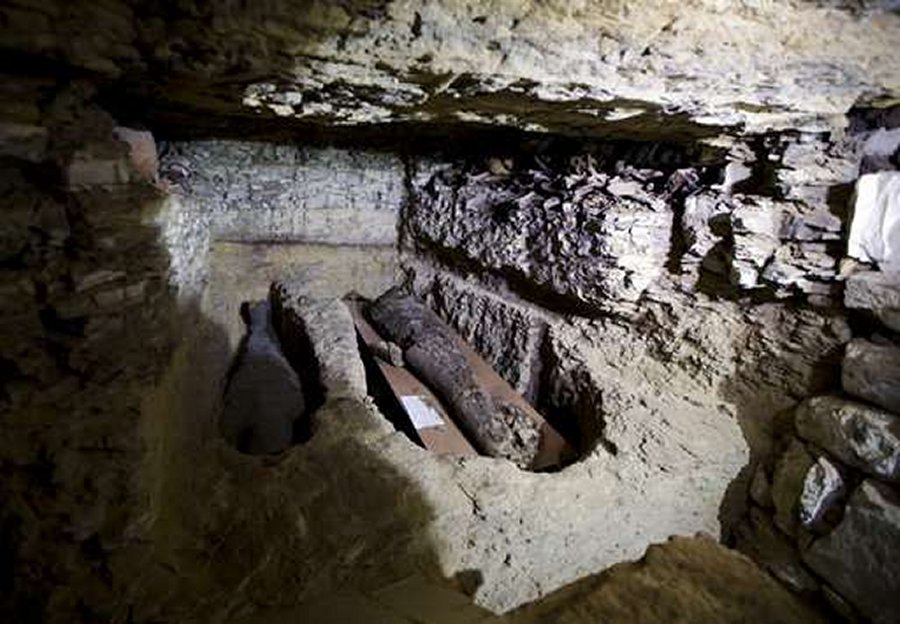
Recently discovered mummies are seen at at a mummification workshop dating back some 2,500 years at an ancient necropolis near Egypt's famed pyramids in Saqqara, Giza, Saturday, July 14, 2018. Antiquities Ministry officials said at a press conference that archaeologists hope the find will reveal more about the secrets of mummification in the 26th dynasty of ancient Egypt. (AP Photo/Amr Nabil)
This particular discovery holds immense importance in understanding the mummification process, as within the workshop and shaft uncovered, an embalmer’s cachette was found.
The cachette includes a large collection of pottery vessels, bowls and measuring cups. This trove uncovered is said to be able to reveal more information about the oils used in the mummification process, which dates back to the 26th dynasty.
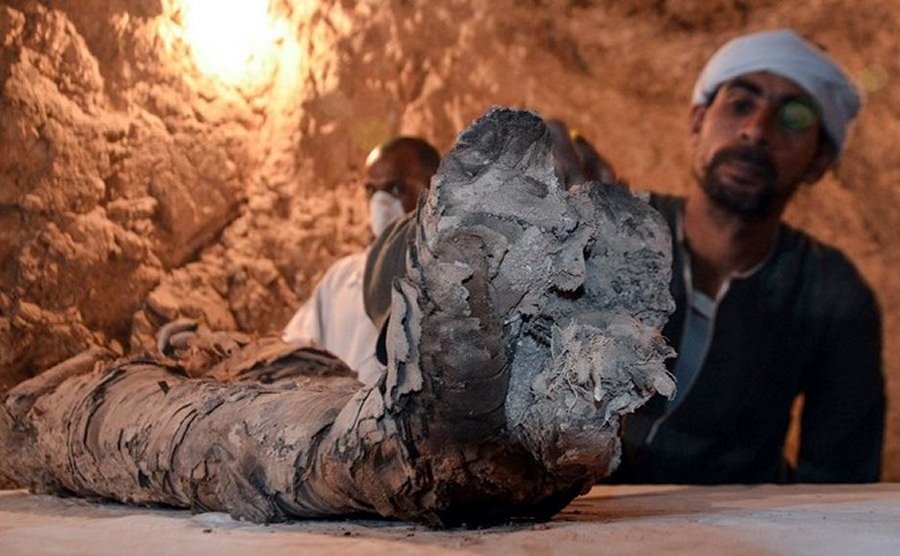
Officials said the discovery dates to the Saite-Persian period from 664-404 B.C. The site is located at the Saqqara cemetery, part of the Memphis necropolis, a UNESCO World Heritage Site. (File Photo: AFP) - via Arab News
Among other valuable artifacts are fragments of mummy cartonnages, canopic cylindrical jars as well as marl clay and faience cups. The most notable artifact found though, is a gilded silver mask, which was found on the face of a mummy in a damaged wooden coffin.
The mask is the first to be discovered since 1939, and is speculated to have belonged to an ancient priest.
Hussein also speaking of the mask mentioned that,
“The finding of this mask could be called a sensation,” said Hussein, adding that the mask was hugely significant since “very few masks of precious metals have been preserved to the present day because the tombs of most Ancient Egyptian dignitaries were looted in ancient times.”
While speaking to the press regarding the discovery, Minister of Antiquities Khaled al-Anani said that “It’s only the beginning,” adding that the discovery was the first of many. We will have to wait and see what other exciting discoveries await us.
AncientPages.com
Expand for references
